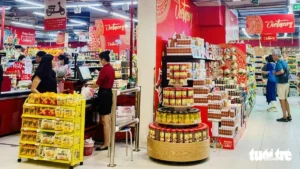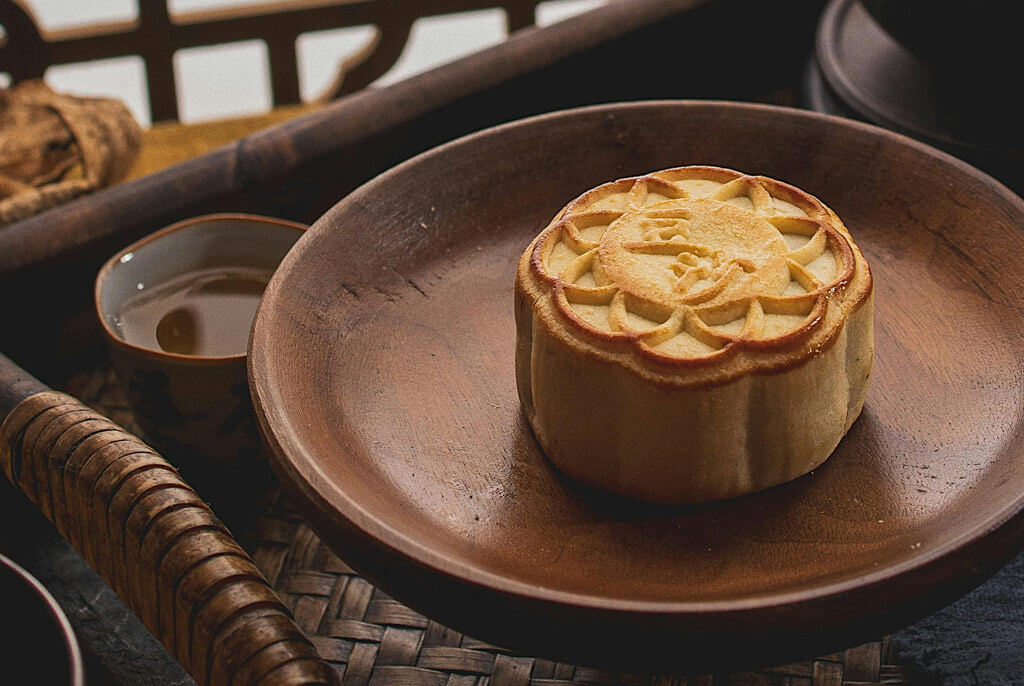All About Vietnam’s Mooncakes: Tradition, Meaning, and Types
Mooncakes are an essential part of Vietnam’s Mid-Autumn Festival (Tet Trung Thu). This celebration, marked by colorful lanterns, lion dances, and family gatherings, takes place on the 15th day of the 8th lunar month. Vietnamese moon cakes are enjoyed during this festival, symbolizing unity, gratitude, and prosperity. In this guide, we’ll explore the rich tradition behind mooncakes, what’s inside them, and how they’ve become a significant part of Vietnamese culture.
The Meaning and Tradition Behind Mooncakes
The tradition of eating mooncakes dates back thousands of years and is deeply rooted in the celebration of the autumn harvest. In Vietnam, mooncakes are given as gifts to family, friends, and business associates as a gesture of appreciation and good fortune. Each mooncake represents the full moon, a symbol of reunion and harmony in Vietnamese culture.
What’s Inside a Vietnamese Mooncake?
Vietnamese mooncakes come in two main types: Banh Nuong (baked mooncakes) and Banh Deo (snow skin mooncakes). Each type has a distinct texture and flavor, but they both share a variety of rich fillings that make them truly unique.
Common Fillings Include:
- Salted egg yolk: This savory filling symbolizes the full moon and is often found at the center of mooncakes.
- Lotus seed paste: One of the most traditional fillings, it offers a smooth and slightly sweet flavor.
- Mixed nuts: A combination of seeds, nuts, and candied fruits for a crunchy, flavorful bite.
- Red bean paste: A sweet filling made from cooked and mashed red beans, providing a smooth texture and delicate taste.
Each mooncake is crafted with intricate patterns on the surface, symbolizing good luck, longevity, or family unity. The fillings represent prosperity and the hope for a bountiful future.
Types of Vietnamese Mooncakes
There are various types of mooncakes available in Vietnam, each with its unique flavor and texture. Here are the two most common types you’ll encounter:
1. Banh Nuong (Baked Mooncakes)
Banh Nuong is the traditional baked mooncake with a golden-brown crust. These mooncakes are typically filled with lotus seeds, salted egg yolks, or mixed nuts. Their rich, dense flavor makes them a favorite among many.
2. Banh Deo (Snow Skin Mooncakes)
Banh Deo, or snow skin mooncakes, have a soft and chewy outer layer made from glutinous rice flour. They are often filled with sweet fillings like mung bean or red bean paste. These mooncakes are lighter than their baked counterparts and are a popular choice for those who prefer a softer texture.
Mooncake Tradition in Vietnam
Mooncakes are not just delicious treats; they are also deeply embedded in Vietnamese culture. They are often exchanged between families, friends, and colleagues as symbols of respect and well-wishing. During the Mid-Autumn Festival, children light lanterns and enjoy mooncakes under the full moon, while adults gather for tea and conversation, sharing stories and reflecting on the past year.
The Mid-Autumn Festival is also a time for businesses to express their gratitude. Companies frequently gift mooncakes to their employees and partners as tokens of appreciation, making it a significant part of corporate culture in Vietnam.
How to Enjoy Mooncakes
Mooncakes are best enjoyed with a hot cup of tea, which helps balance the sweetness of the cake and enhances its flavors. Vietnamese families often share mooncakes in small slices to savor the different textures and flavors inside.
If you’re visiting Vietnam during the Mid-Autumn Festival, you’ll find mooncakes sold at markets, bakeries, and street vendors. It’s a perfect opportunity to immerse yourself in this rich cultural tradition.
The History of Mooncakes
The history of mooncakes dates back over 3,000 years to ancient China, where they were used in harvest celebrations. Over time, mooncakes spread to other countries in East and Southeast Asia, including Vietnam, where they have taken on their own unique cultural significance. The intricate patterns and fillings of Vietnamese mooncakes reflect the country’s diverse culinary influences and its deep-rooted traditions.
Conclusion
Vietnamese mooncakes are more than just a festive treat—they are a symbol of unity, family, and prosperity. From the traditional baked Banh Nuong to the softer snow skin Banh Deo, mooncakes come in a variety of flavors and textures, each offering a taste of Vietnamese culture and heritage. Whether you’re curious about what’s inside a mooncake or looking to experience the Mid-Autumn Festival firsthand, exploring Vietnam’s mooncake traditions is an unforgettable experience.
















